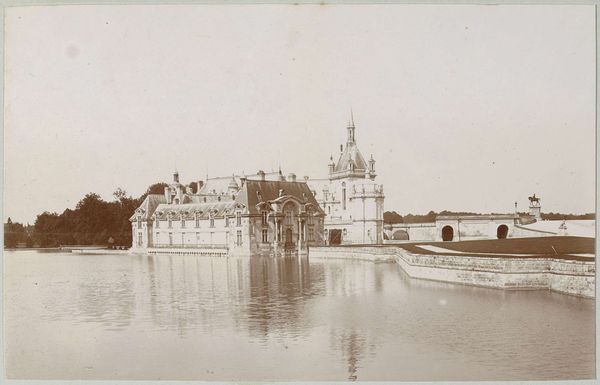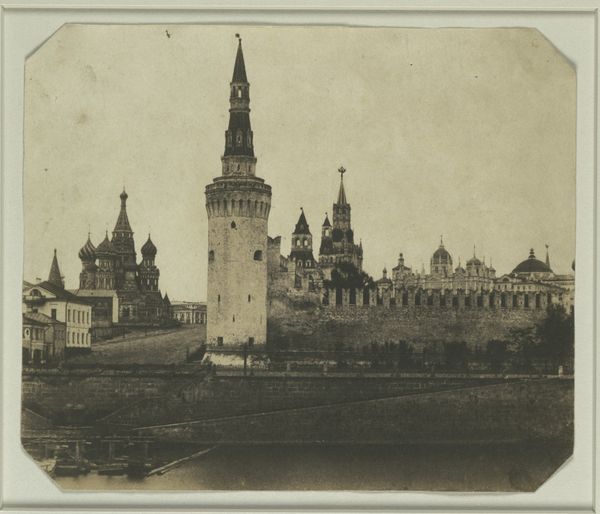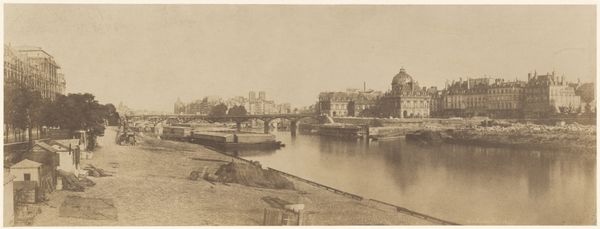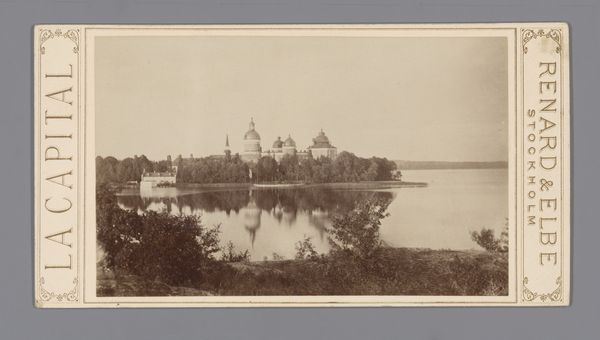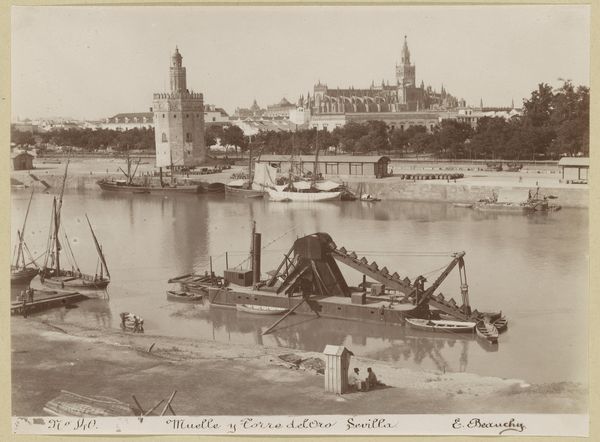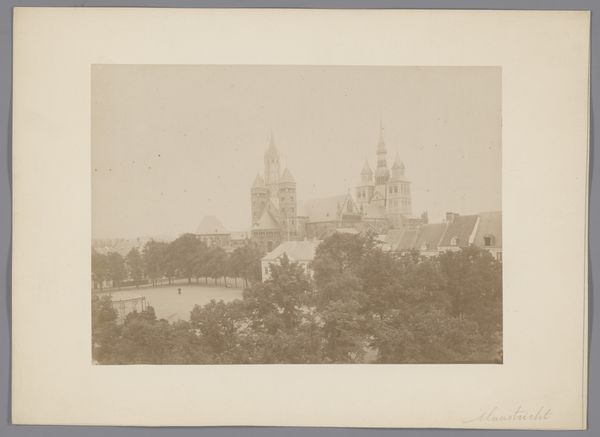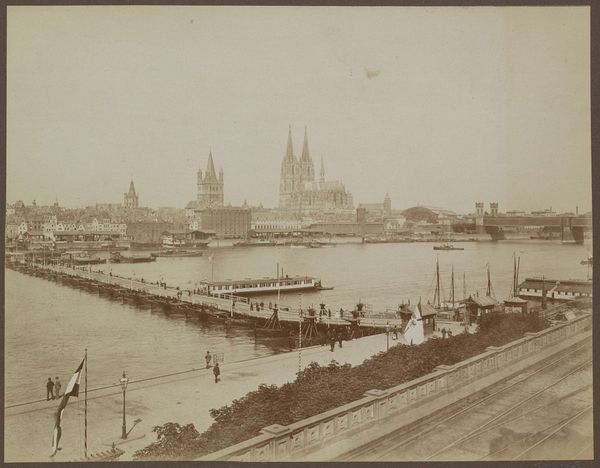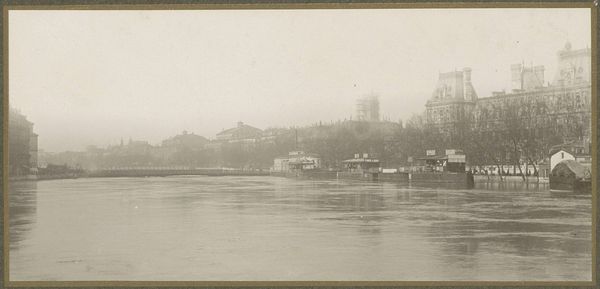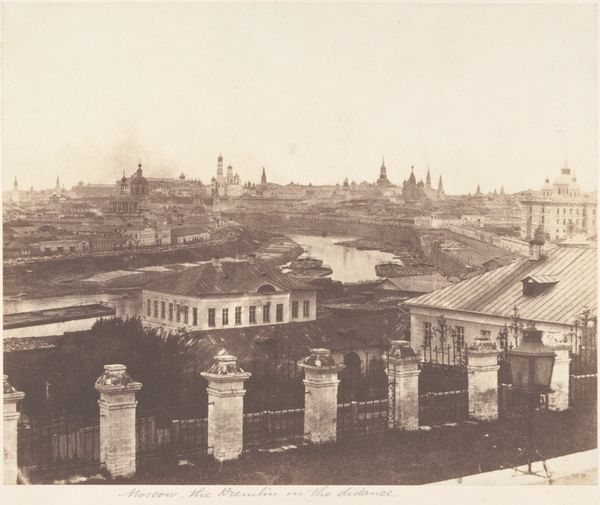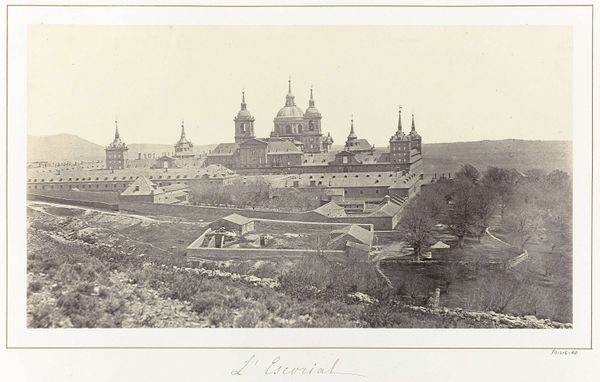
Dimensions: 17.1 × 21.5 cm (image/paper); 43.4 × 55 cm (mount)
Copyright: Public Domain
Curator: Welcome. We’re standing before Roger Fenton's "The Smolnoi Monastery," captured between 1851 and 1852, now residing at the Art Institute of Chicago. Editor: It's striking. The light, the pale sepia tones…almost dreamlike. The monastery, though grand, seems to float on the horizon, its reflection merging with reality. Curator: Indeed. Let's consider Fenton's pioneering work here. This isn't just a picture; it’s a testament to the burgeoning photographic technology of the time. Look closely—notice the evidence of the painstaking wet-collodion process. The materiality itself speaks to the labor involved. Editor: I see that, but I'm also drawn to the composition. The strong horizontal lines—the riverbank, the river itself, then the line of trees. They lead the eye directly to that cluster of domes and spires. It's beautifully balanced. The light! The way it catches the architecture and dances on the water is incredible. Curator: But who was the intended consumer of such a scene? Certainly, wealthy patrons were commissioning and collecting these images, fueling a market where places became commodities. The very act of photographing the monastery implicates it in networks of power and trade. Editor: A fair point. And yet, I find it hard not to appreciate the formal achievements, quite separate from any commercial considerations. Look at the placement of those boats in the foreground—almost like musical notes anchoring the scene. They repeat the horizontal rhythm and prevent the entire composition from feeling static. Curator: Certainly, this image operates on many levels. I am particularly curious about how Fenton chose to foreground a very mundane subject – several rowing boats – thus juxtaposing the industrialisation period represented by transport and labour with traditional Russian orthodox symbolism. Editor: Perhaps the boats are not simply material objects, but allegorical of an age gone by! After our discussions, I find it harder to ignore the contrast. Curator: And now I find myself contemplating more deeply the sheer artistry. It's in these tensions that meaning truly arises, and how art can speak.
Comments
No comments
Be the first to comment and join the conversation on the ultimate creative platform.
